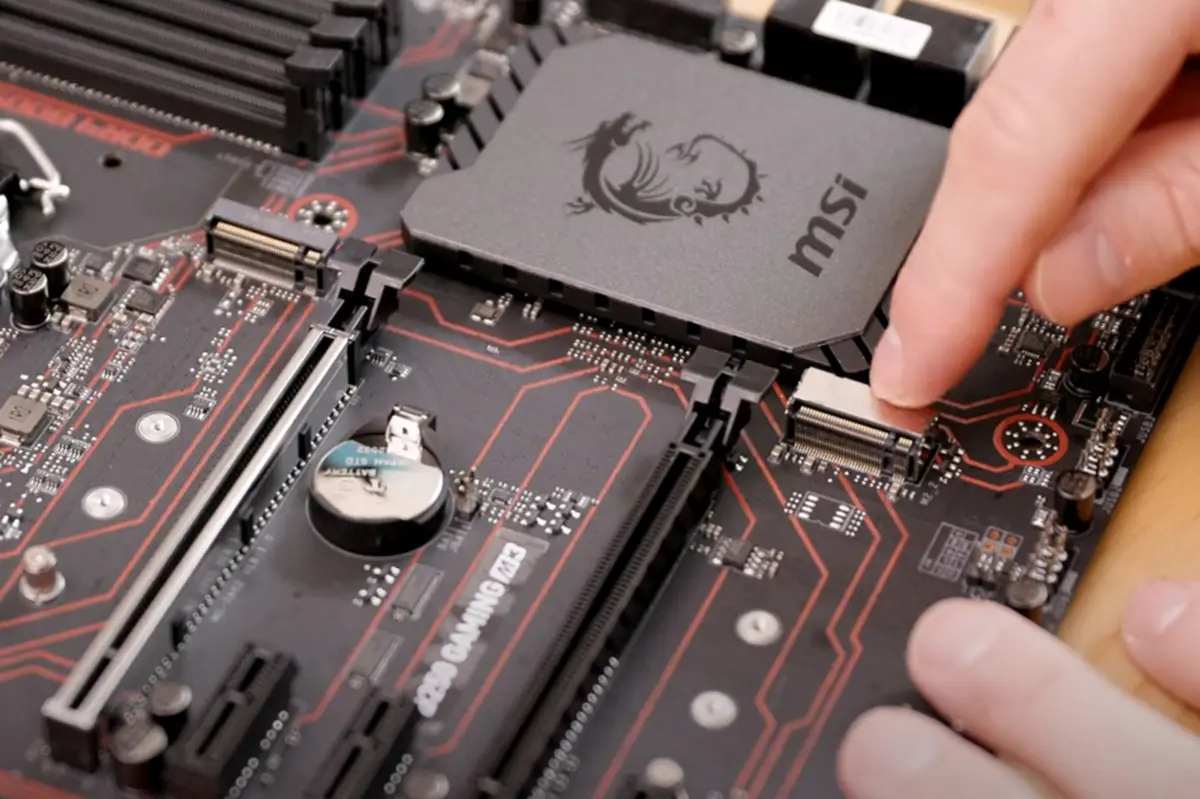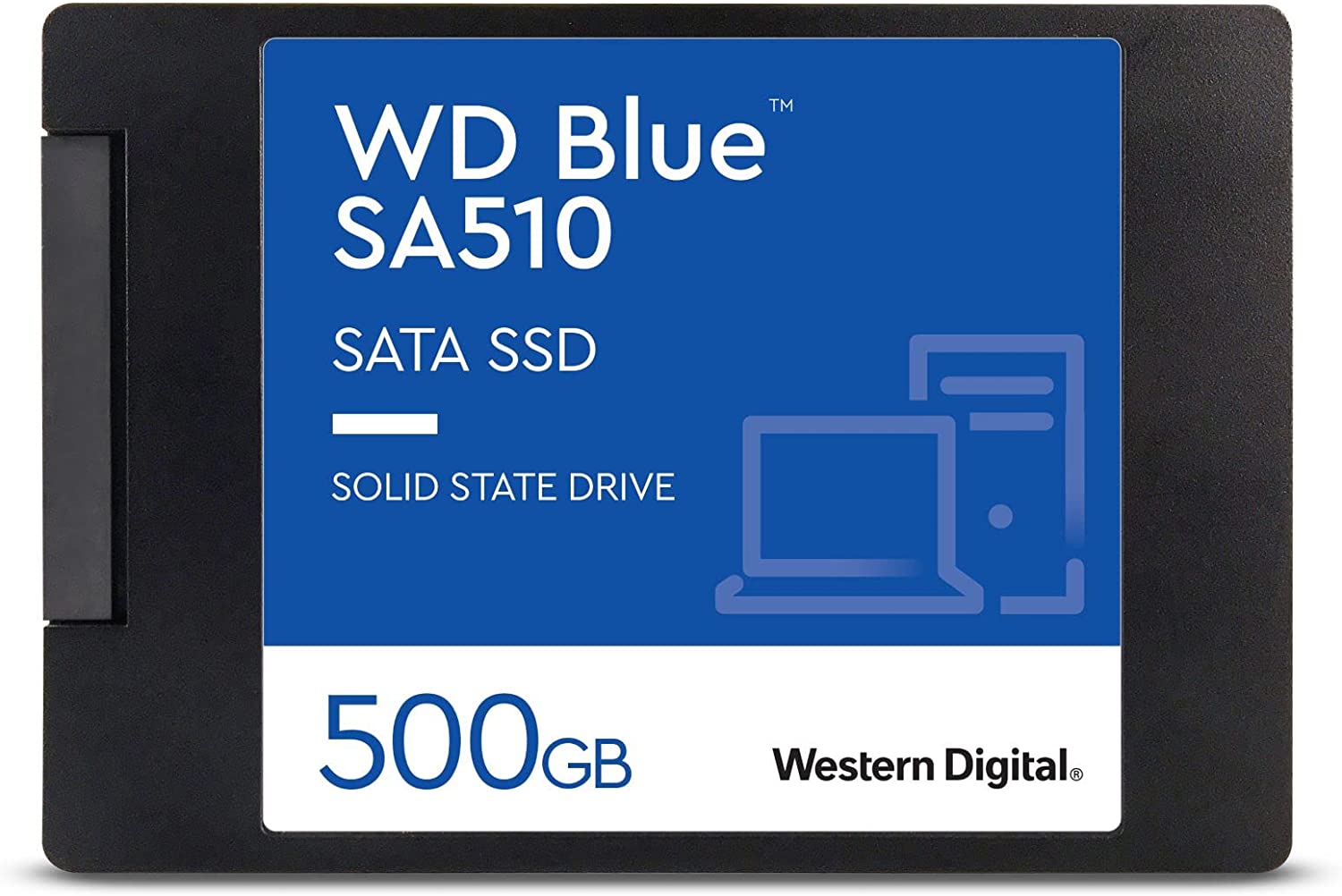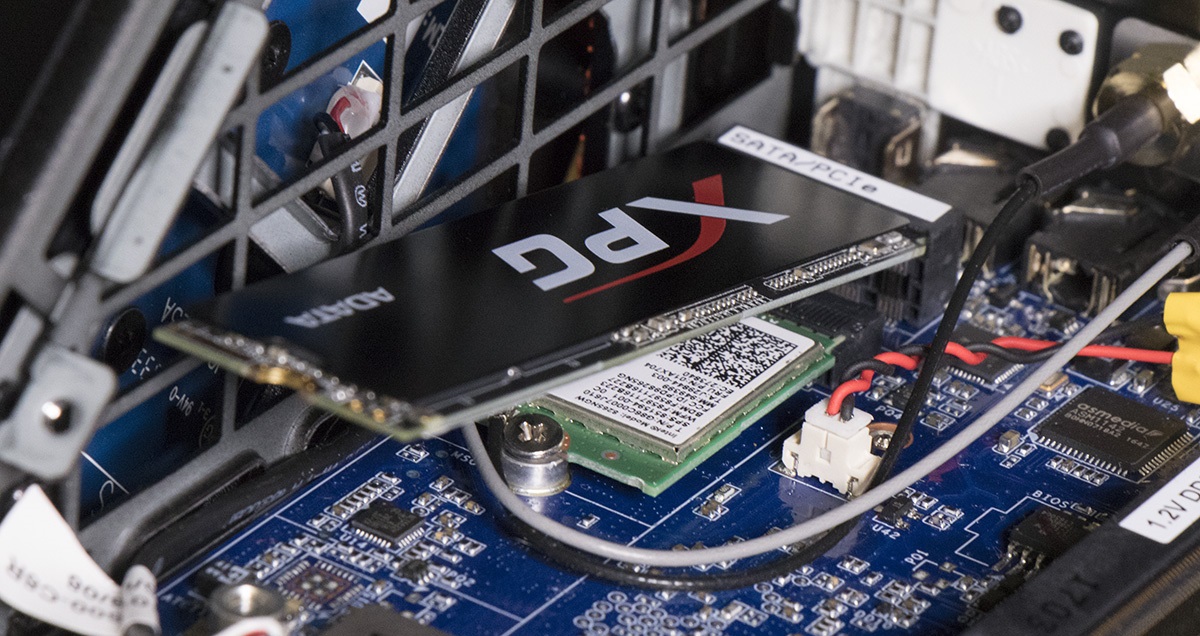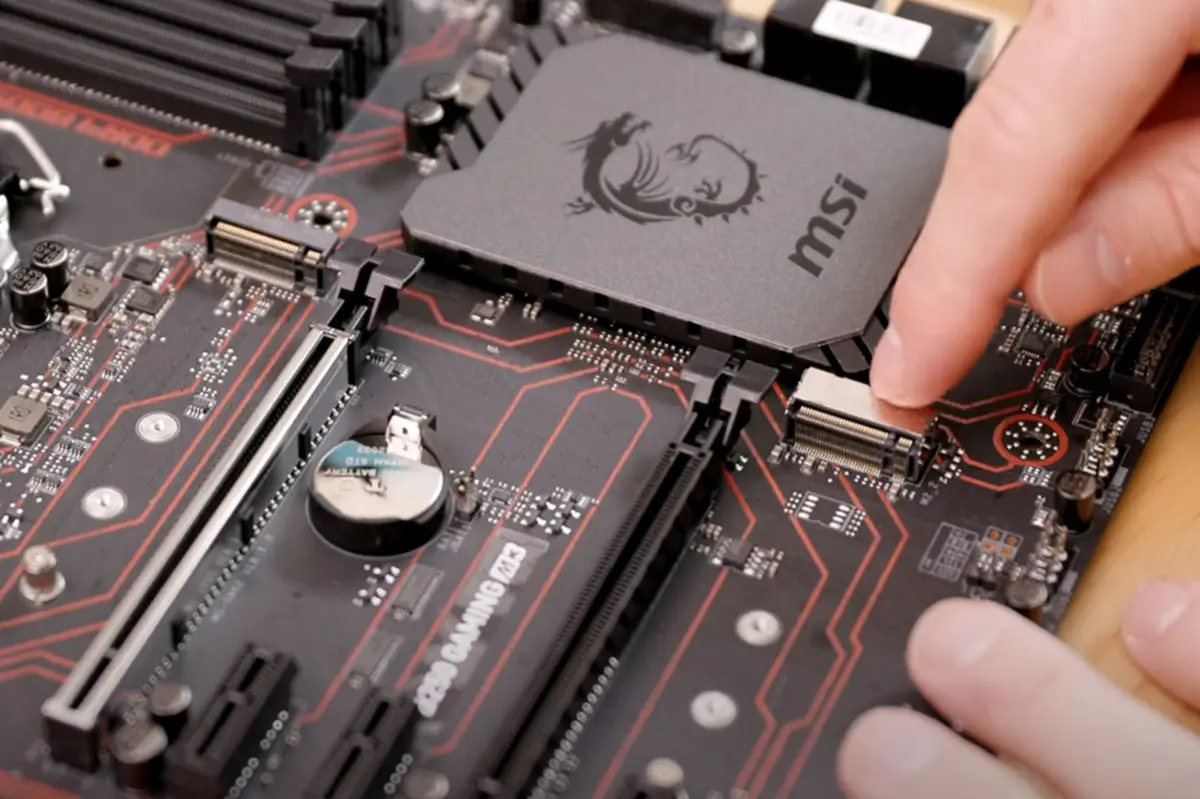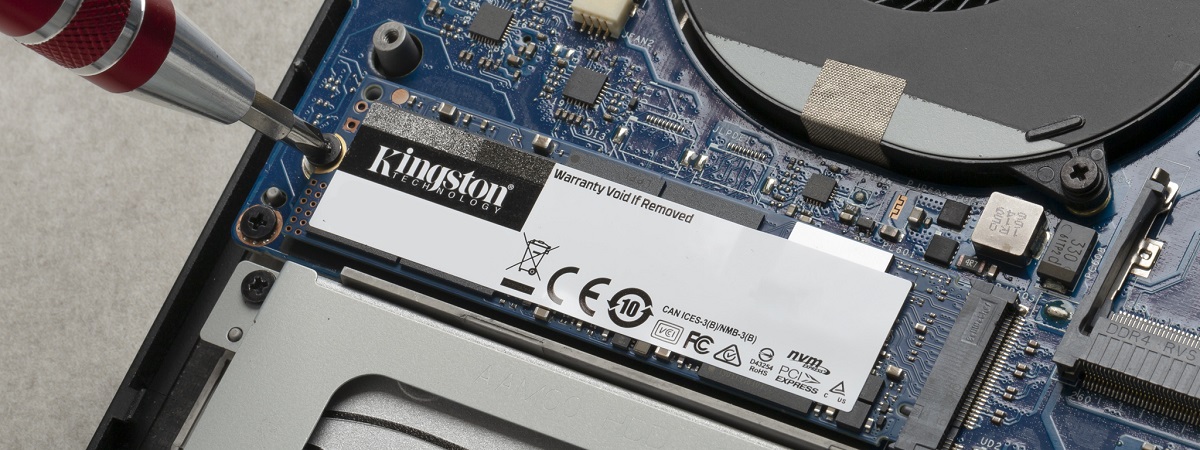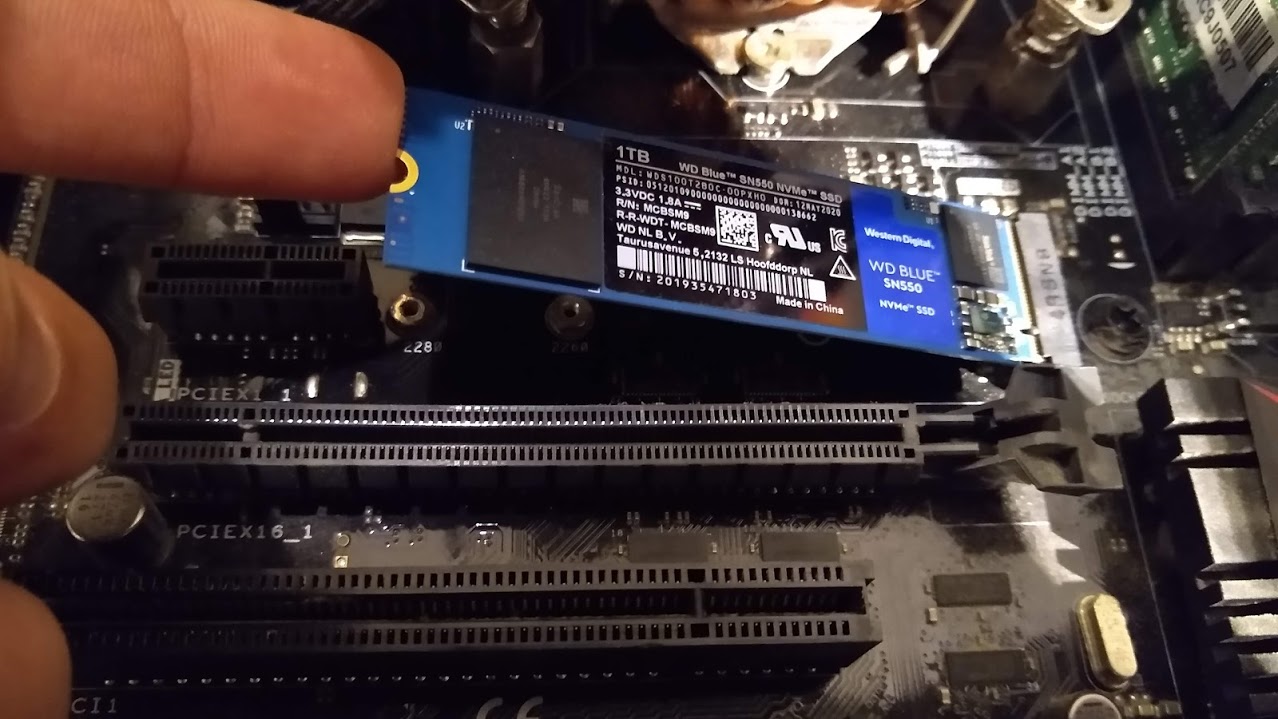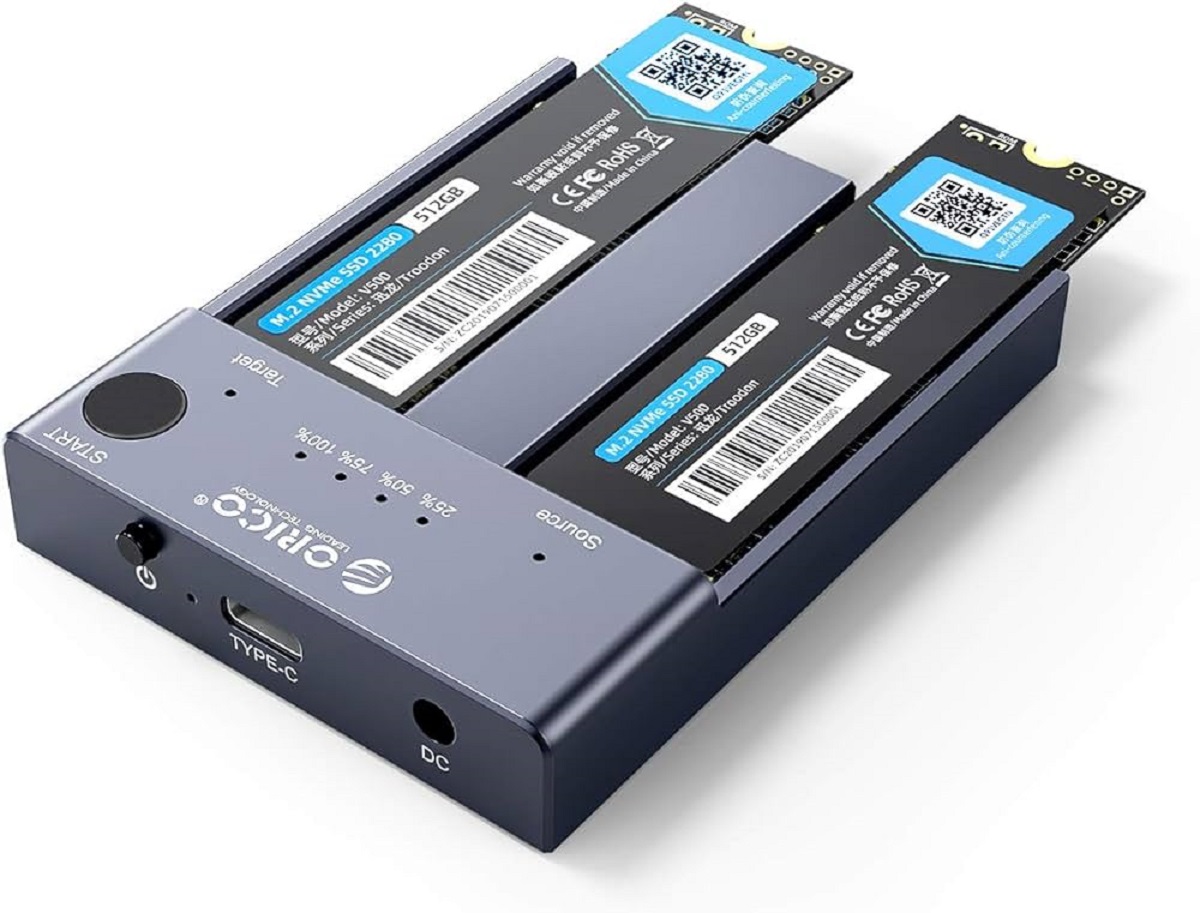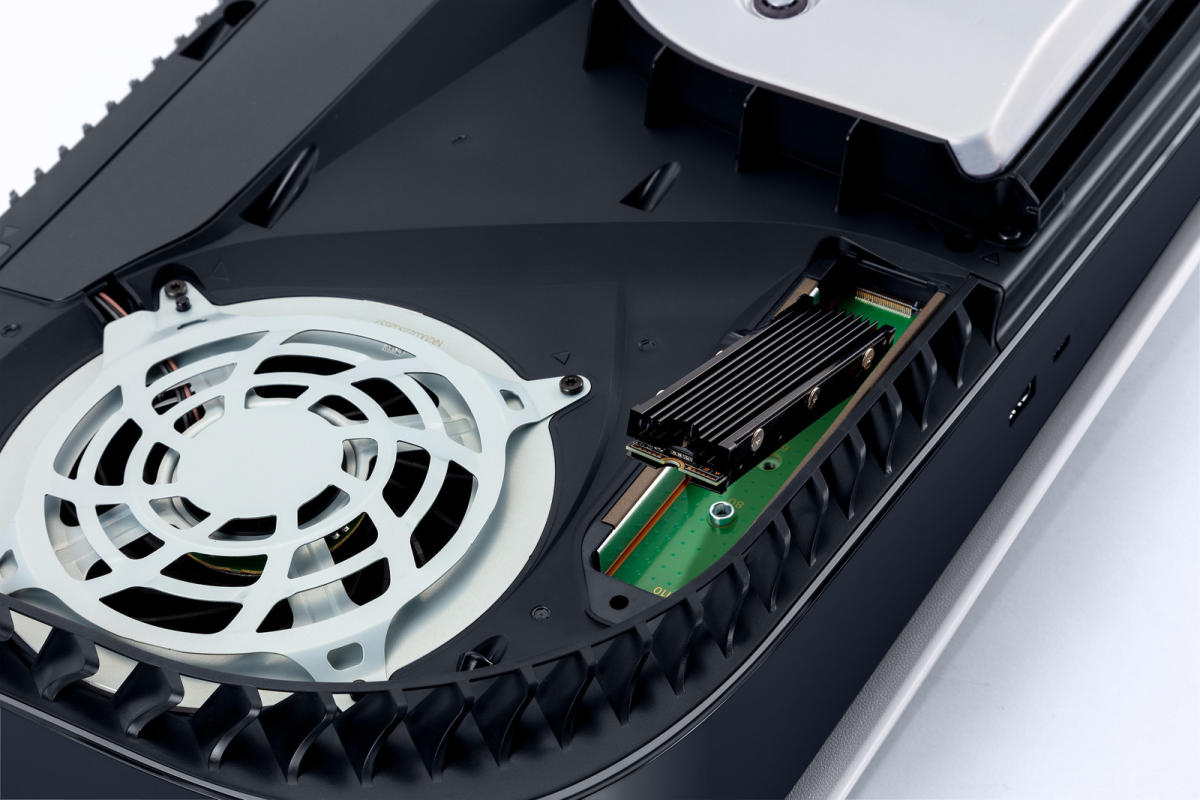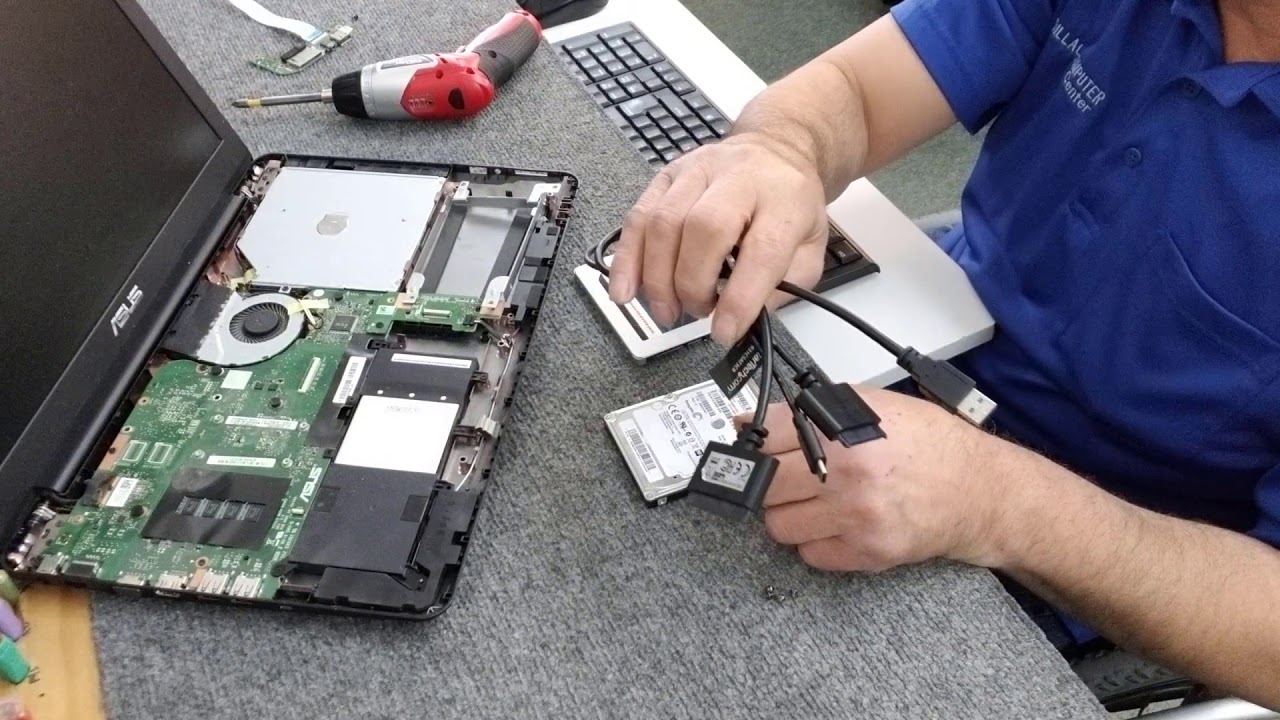Introduction
Welcome to the world of solid-state drives (SSD), the modern storage solution that has revolutionized the speed and performance of computers. If you’re looking to upgrade your storage capacity or improve the overall system speed, adding an SSD to your setup is a wise decision.
However, when it comes to installing an SSD into your computer, you may find yourself in a bit of a conundrum: which SSD slot should you use? This question can be perplexing, especially if you’re not familiar with the various slots available on your motherboard.
In this article, we will guide you through the process of selecting the right SSD slot for your needs. We’ll explore the key factors to consider, including compatibility with your motherboard and the different types of SSD interfaces available. By the end, you’ll have a clear understanding of which slot is the best choice for your SSD.
Before we delve into the specifics, it’s important to note that the exact placement and availability of SSD slots can vary depending on your motherboard manufacturer and model. So, make sure to consult your motherboard’s user manual or manufacturer’s website for detailed information specific to your setup.
Now, let’s dive into the factors to consider when choosing an SSD slot for your upgrade.
Factors to Consider Before Choosing an SSD Slot
Before you make a decision about which SSD slot to use, there are a few important factors you should consider. These factors will help you determine the slot that is most compatible with your needs and the specifications of your computer.
1. Compatibility with Motherboard: The first and foremost factor to consider is the compatibility of the SSD slot with your motherboard. Different motherboards support different types of SSD slots, such as M.2 or SATA. It’s crucial to ensure that the slot you choose is compatible with your motherboard to avoid any compatibility issues or performance limitations.
2. SATA vs PCIe Interface: SSDs can use either a SATA (Serial ATA) or PCIe (Peripheral Component Interconnect Express) interface. SATA SSDs are more common and offer good performance for general computing tasks. On the other hand, PCIe SSDs provide faster speeds and are ideal for demanding applications like gaming or content creation. Understanding the interface supported by your chosen slot will help you select the SSD that best suits your needs.
3. Available Slots and their Properties: Your motherboard may have multiple SSD slots with different properties. For example, some slots may be capable of supporting NVMe (Non-Volatile Memory Express) SSDs, which offer even faster speeds than traditional SSDs. Others may have limitations on the length or width of the SSD that can be installed. Carefully examine the specifications of each slot to determine their capabilities and limitations.
4. Other Components and Expansion Slots: Consider the placement of other components, such as graphics cards or cooling solutions, as they may obstruct certain SSD slots. Additionally, it’s important to keep in mind any future expansion plans you may have, such as adding more storage or upgrading other components. Choosing a slot that allows for future expansion will save you from potential limitations down the line.
By considering these factors, you can make an informed decision when selecting the SSD slot that is best suited for your needs and setup. Now, let’s explore the different types of SSD slots and their benefits in more detail.
Compatibility with Motherboard
One of the key factors to consider when choosing an SSD slot is its compatibility with your motherboard. Not all motherboards have the same types of SSD slots, so it’s essential to ensure that the slot you choose is compatible with your motherboard’s specifications.
Most modern motherboards offer at least one or two M.2 slots and several SATA slots for SSD installation. M.2 slots are becoming increasingly popular due to their compact size and high-speed capabilities, while SATA slots have been around for a longer time and are more commonly found in older motherboards.
When determining compatibility, consider the following:
- Form Factor: SSDs come in different form factors, such as 2.5-inch, M.2, and U.2. Each form factor requires a specific slot on the motherboard. For example, a 2.5-inch SSD will typically need a SATA slot, while an M.2 SSD will require an M.2 slot.
- Key Notch: M.2 slots have different key notches, indicated by the position of the notch on the connector. The key notch determines the type of M.2 SSDs that can be installed. Common key notches include B, M, and B+M. Check your motherboard’s specifications to ensure compatibility with the M.2 SSD you plan to use.
- Interface: Consider whether your motherboard supports a SATA or PCIe interface. SATA SSDs are typically compatible with SATA slots, while PCIe SSDs require PCIe slots. PCIe slots provide faster speeds and are ideal for high-performance SSDs.
- Motherboard Documentation: Consult your motherboard’s user manual or the manufacturer’s website for specific information about the supported SSD slots and their compatibility with different types of SSDs. This will ensure that you select the correct slot that aligns with your specific SSD requirements.
By carefully examining the compatibility between your motherboard and the SSD slot, you can ensure a seamless installation process without any compatibility issues. Compatible SSD slots will provide optimal performance and allow you to take full advantage of the features offered by your chosen SSD.
Now that we’ve covered compatibility, let’s explore the differences between the SATA and PCIe interfaces to help you make an informed decision about the type of SSD slot that best suits your needs.
SATA vs PCIe Interface
When it comes to SSD slots, two common interfaces are SATA (Serial ATA) and PCIe (Peripheral Component Interconnect Express). Understanding the differences between these interfaces is crucial in selecting the right SSD slot for your needs.
SATA Interface:
SATA is the older and more common interface used for connecting storage devices, including SSDs. It offers a good balance of performance and affordability, making it suitable for everyday computing tasks. SATA SSDs are widely available, and most motherboards have multiple SATA slots to accommodate them.
SATA SSDs typically have lower read and write speeds compared to PCIe SSDs, but they still provide a significant improvement over traditional hard drives. They are ideal for general computing needs, such as web browsing, document editing, and multimedia playback.
PCIe Interface:
PCIe is a newer and faster interface that offers increased bandwidth for improved SSD performance. PCIe SSDs utilize the high-speed PCIe lanes on your motherboard, enabling faster data transfer rates and reduced latency.
PCIe SSDs are available in different generations, such as PCIe 3.0 and the latest PCIe 4.0. These newer generations offer even faster speeds, making them ideal for demanding tasks like gaming, video editing, and content creation.
It’s important to note that not all SSD slots support PCIe SSDs. If high performance is a priority for your specific workload, choose a motherboard with PCIe slots or ensure that your existing motherboard has PCIe slots available for SSD installation.
Choosing between SATA and PCIe depends on your specific needs and budget. If you prioritize cost-effectiveness and standard performance, SATA SSDs are a reliable choice. On the other hand, if you require faster speeds and enhanced performance, investing in a PCIe SSD and utilizing a compatible slot is recommended.
Now that we understand the differences between the SATA and PCIe interfaces, let’s take a closer look at the available slots and their properties to help you make an informed decision.
Available Slots and their Properties
When it comes to selecting an SSD slot, it’s essential to consider the available slots on your motherboard and their respective properties. Different slots offer different capabilities and limitations, so understanding their properties will help you make an informed decision.
Let’s explore some of the common SSD slots you may find on your motherboard:
- M.2 Slots: M.2 slots are becoming increasingly popular due to their compact size and high-speed capabilities. They are typically found on modern motherboards and support both SATA and PCIe SSDs. M.2 slots come in different lengths, such as 2242, 2280, and 22110, referring to the dimensions of the SSD they can accommodate. Some M.2 slots may support NVMe SSDs, which offer even faster speeds compared to traditional SATA-based M.2 SSDs.
- SATA Slots: SATA slots are common on both old and new motherboards. They support traditional 2.5-inch SATA SSDs. These slots offer good performance for everyday tasks and are typically more cost-effective than PCIe-based slots. SATA slots are backward compatible, meaning you can use an older SATA SSD in a newer motherboard with a SATA slot.
- U.2 Slots: U.2 slots, also known as SFF-8639, are less common but still present on some high-end motherboards. U.2 slots are larger, similar in size to a standard SATA drive, and support U.2 SSDs, which provide high performance and capacity.
- PCIe Slots: PCIe slots are primarily used for expansion cards, such as graphics cards, sound cards, and network cards. However, some motherboards have dedicated PCIe slots for SSDs. These slots provide the highest performance and are ideal for high-demand tasks. PCIe slots come in different generations, such as PCIe 3.0 and the latest PCIe 4.0, which offer increased bandwidth and faster speeds.
Each slot has its advantages and limitations. M.2 slots save space and offer high-speed performance, while SATA slots provide cost-effective options for general computing needs. U.2 slots and dedicated PCIe slots are ideal for users who require maximum performance and have specific requirements for their storage solutions.
Before choosing an SSD slot, carefully examine your motherboard’s specifications and determine which slots are available and compatible with your desired SSD. Consider the form factor, interface, and any limitations such as length or width restrictions.
Also, take into account the placement of other components on your motherboard, as some slots may be obstructed by graphics cards or cooling solutions. Additionally, think about any future expansion plans you may have, as selecting a slot that allows for future upgrades will save you the hassle of upgrading or replacing components later on.
By understanding the available slots on your motherboard and their specific properties, you can make an educated decision about which slot is the best choice to accommodate your SSD.
Now, let’s move on to exploring the usage of M.2 slots and SATA slots in more detail.
Using M.2 Slots
M.2 slots have gained popularity in recent years due to their compact size and high-speed capabilities. These slots offer a convenient and efficient way to install SSDs in modern motherboards. Here’s what you need to know about using M.2 slots for your SSD:
1. Form Factor: M.2 SSDs come in different lengths, such as 2242, 2280, and 22110, which refer to the dimensions of the SSD. Make sure to choose an M.2 SSD that matches the length supported by your motherboard’s M.2 slot. The most common length is 2280, which means the SSD is 22mm wide and 80mm long.
2. Compatibility: M.2 slots on motherboards can support both SATA and PCIe interface SSDs. It’s important to match the interface of your SSD with the supported interface of the M.2 slot. SATA-based M.2 SSDs are typically cheaper and offer good performance for everyday computing needs. On the other hand, PCIe-based M.2 SSDs provide faster speeds and are ideal for high-performance tasks.
3. Key Notch: M.2 slots have different key notches, which indicate the type of SSDs the slot can accept. Common key notches include B, M, and B+M. It’s crucial to ensure that the key notch of your SSD matches the key notch of the M.2 slot on your motherboard. This ensures proper compatibility and prevents any installation issues.
4. NVMe Support: Some M.2 slots on modern motherboards also support NVMe (Non-Volatile Memory Express) SSDs. NVMe is a protocol that allows SSDs to communicate with the system more efficiently, resulting in faster speeds. If your motherboard supports NVMe, consider opting for an NVMe SSD for even better performance.
Installing an M.2 SSD is relatively straightforward. Simply locate the M.2 slot on your motherboard and insert the SSD at a slight angle, aligning the notches on the SSD with the key notches on the slot. Gently push it down until it is securely in place. Some M.2 slots have retention screws or clips that need to be tightened to secure the SSD properly.
Once the SSD is installed in the M.2 slot, you may need to configure the boot order in your BIOS to ensure that the system recognizes the new drive. Consult your motherboard’s user manual for specific instructions on how to do this.
M.2 slots offer a versatile and space-saving solution for SSD installation. Their high-speed capabilities make them ideal for users who require fast storage performance for tasks such as gaming, multimedia editing, or data-intensive applications.
Now that we’ve covered M.2 slots, let’s move on to exploring the usage of SATA slots for SSD installation.
Using SATA Slots
SATA slots are a common and reliable choice for SSD installation. These slots have been around for a long time and are present on most motherboards, making them a viable option for those looking to upgrade their storage with an SSD. Here’s what you need to know about using SATA slots for your SSD:
1. Compatibility: SATA slots are specifically designed to support SATA-based SSDs. These SSDs come in the familiar 2.5-inch form factor, resembling a traditional hard drive. SATA SSDs provide a significant boost in speed and performance compared to mechanical hard drives, making them an excellent choice for general computing needs.
2. Performance: While SATA SSDs do not offer the same high speeds as PCIe-based SSDs, they still provide a noticeable improvement in overall system performance. SATA III, the current standard, offers a maximum transfer speed of 6 Gbps, which is sufficient for most applications and everyday computing tasks.
3. Installation: Installing a SATA SSD in a SATA slot is straightforward. Locate an available SATA slot on your motherboard and connect one end of a SATA data cable to the corresponding slot on the SSD and the other end to the SATA slot on the motherboard. Additionally, connect the SSD to the power supply using a SATA power cable. Once connected, secure the SSD in place using screws or the provided mounting brackets.
4. Daisy Chaining: SATA slots allow for daisy chaining, which means you can connect multiple SATA devices to a single SATA controller on the motherboard. This allows for easy expansion of storage capacity by adding additional SSDs or other SATA devices like hard drives or optical drives.
SATA slots are a reliable and cost-effective option for SSD installation. They are widely supported, backward compatible, and offer good performance for everyday computing tasks. SATA SSDs provide a significant improvement over traditional mechanical hard drives and are a viable choice for users who are looking to upgrade their storage without the need for extreme speeds.
It’s important to note that using a SATA SSD in a SATA slot may result in lower speeds compared to using a PCIe SSD in a PCIe slot. If you require higher performance for demanding tasks, such as gaming or content creation, consider opting for a PCIe-based SSD with the appropriate slot on your motherboard.
Now that we’ve covered using SATA slots for SSD installation, let’s bring everything together and summarize the key points to help you make an informed decision.
Conclusion
Choosing the right SSD slot for your setup is a crucial step in maximizing the performance and storage capacity of your computer. By considering factors such as compatibility with your motherboard, the SATA vs PCIe interface, and the properties of available slots, you can make an informed decision that meets your specific needs.
When it comes to compatibility, ensure that the SSD slot you choose is compatible with your motherboard’s specifications. Understanding the form factor, key notch, and interface supported by the slot is essential in selecting the appropriate SSD.
The choice between the SATA and PCIe interface depends on your performance requirements and budget. SATA SSDs provide cost-effective storage solutions for everyday tasks, while PCIe SSDs offer faster speeds ideal for demanding applications.
Examining the properties of available slots on your motherboard, such as M.2, SATA, U.2, and PCIe, allows you to determine the best option based on your storage needs and future expansion plans.
Using an M.2 slot offers a compact and high-speed solution, while SATA slots provide reliability and cost-effectiveness. Consider the specific benefits and limitations of each slot before selecting the most suitable one for your SSD.
Ultimately, selecting the right SSD slot requires careful consideration of your motherboard’s compatibility, desired performance, and available slots. Take into account your specific needs and budget to make an educated decision that will optimize your system’s storage capabilities.
Remember to consult your motherboard’s user manual or the manufacturer’s website for detailed information specific to your setup. Following the recommended guidelines will ensure a successful SSD installation and enhance the overall performance of your computer.
Now that you have a comprehensive understanding of the factors to consider when choosing an SSD slot, you’re ready to embark on your upgrade journey.







